
November |
Access |
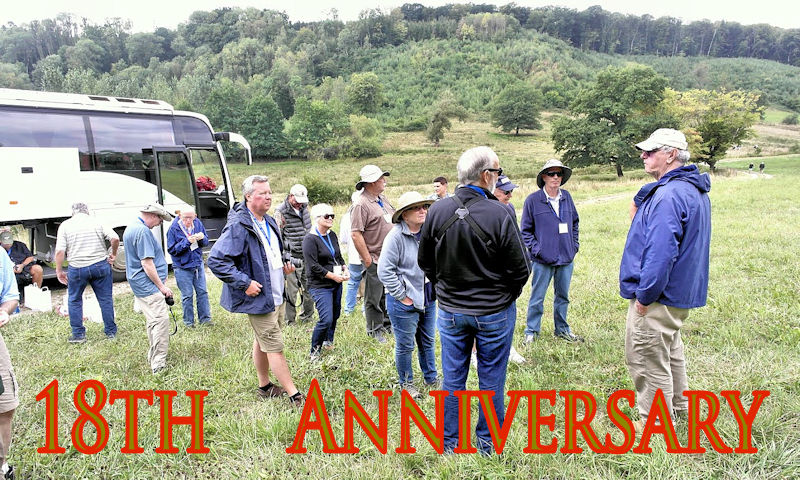
Your Editor (Right) with His 2018 AEF Tour at the Sgt. York Site
Lessons from the Battlefields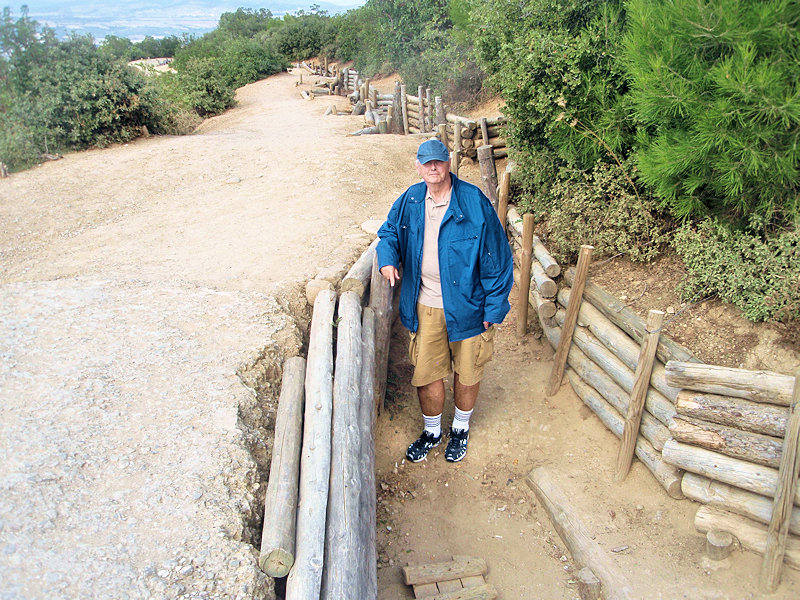
At the Front Line Trenches, Anzac Sector, Gallipoli
I want to start out this anniversary issue by thanking all of our readers, particularly the 1,500+ subscribers who have been with us the entire 18 years. In preparation for this edition I've gone back and read many of our early presentations and have to say I'm surprised at how closely I've stuck to the original concept. As I've written here occasionally, I find the Great War endlessly interesting. My plan was to present a broad selection of interesting topics to demonstrate this and to encourage more enthusiasts to study the still highly influential events of 1914-1918. Lately, I've also tried to examine one big theme with multiple articles, while still presenting a variety of materials. For our anniversary issue, I've decided to focus on something dear to my heart, the war's battlefields.
Grasping the Marne
|
||||||||
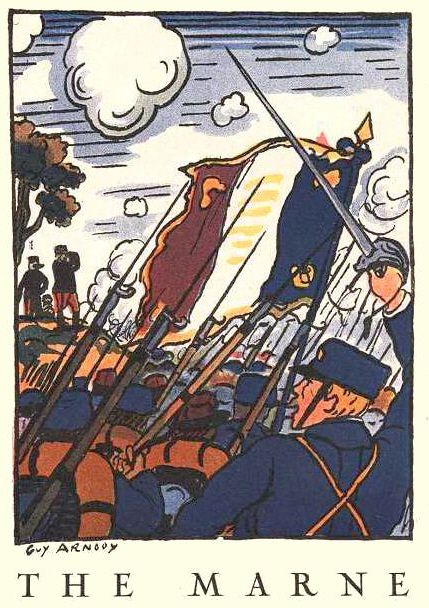
|
As interesting as these stops were, I knew I was missing the massive scope of the battle. So, in 2014 for the 100th anniversary of the battle I decided to cover the battle in its entirety. In preparation, I studied all the works I could find and, most important, searched out the best maps I could find. What I came to see (in football terms) two teams of six armies each (counting the six division BEF as a full army) lined up against one another. However, the formations weren't head to head in all cases. Sometimes they were gaps leaving an army with open territory in front and in some cases other armies had two enemy armies facing them. I realized in each of these unbalanced situations there had been a possibility for one side or the other to break through and wreck the plans of their opponents—thus winning the battle and the war. I decided to visit each of these gaps (there were four) on the trip. I also decided to start the trip at the Hotel des Invalides, where the taxicabs of the Marne started out and work systematically to the farthest east extent of the battle.

My 2014 Group Where the First Shot of the Battle Was Fired
My group and I learned a lot on the trip, too much to fully summarize here. But a few points are worth listing. These are things I would have never known had I not traveled the entire battlefield of the Marne.
1. The failure of the Crown Prince's Fifth Army to capture Verdun in the earlier campaign had a rippling negative effect on the German effort. Three of those gaps were in the eastern part of the ba close to Verdunttlefield. Had Fifth Army been able to spring loose a corps or two, those men could have been plugone of ged into thosse openina and wreaked havoc with Joffre's plans.
2. More broadly put, while much is written about the opportune charge of the BEF through the western gap around Meaux, the German Army missed multiple similar opportunities 100 miles to the east.
3. In all my reading about the battle, I had completely missed the significance of a night attack on 8 Septemer orderded by new Fifth Army commander Franchet d'Espèray against the opposing German Second Army commander. Having just driven across the Meaux gap myself, I saw how the assault froze the enemy in place and guaranteed that the BEF would have a wide-open path to charge through.
4. Besides issuing his stirring quote, "Hard pressed on my right, my center is falling back, impossible to move, situation excellent. I attack," General Foch did a marvelous job commanding his new 9th Army when it was attacked by both the German Second and Third Armies.
5. I was surprised to once again run into that whirling dervish of a lieutenant, Erwin Rommel. who led one of the last successful attacks of the battle at the village of Rembercourt south of Verdun just before the retreat to the Aisne was ordered.
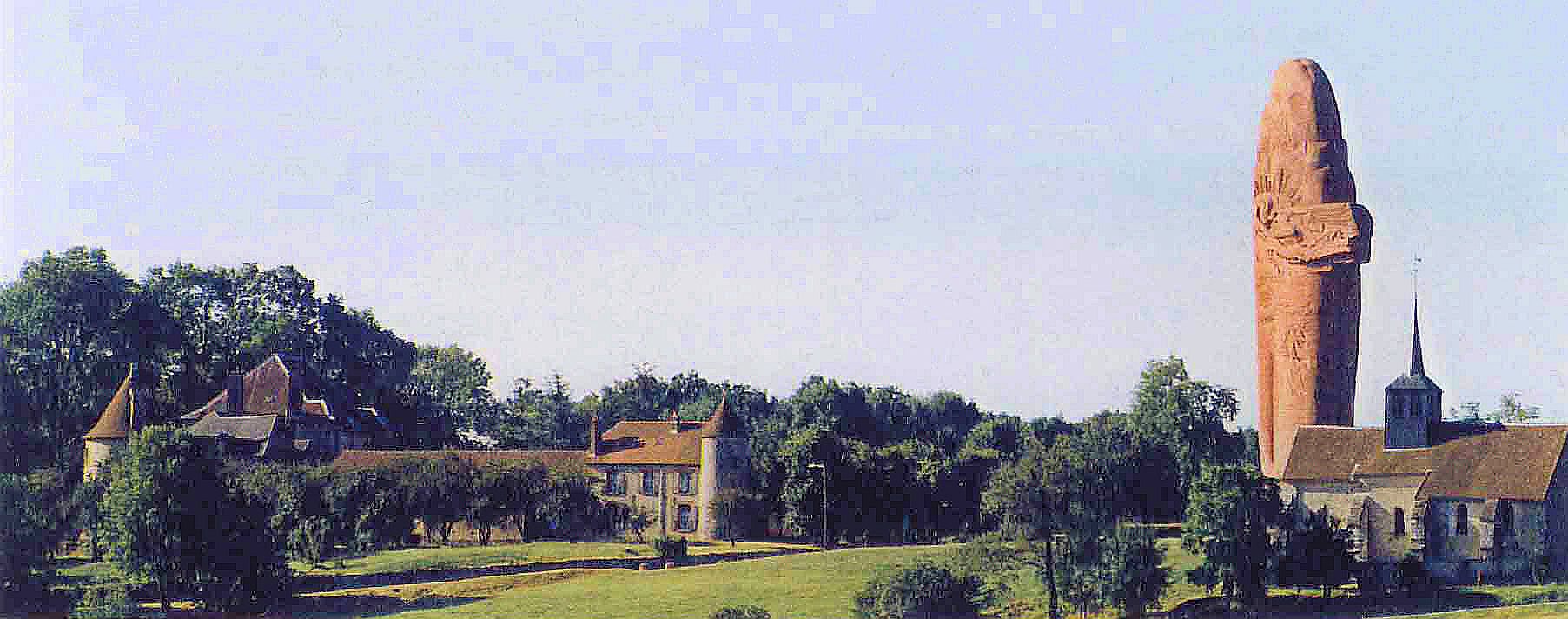
Mondemont, Where Foch Held the Line; National Memorial on Right
After the 2014 trip, I published a full issue of my magazine Over the Top on the Battle of the Marne. Here are some of my reflections on the battle after traveling its full length.
In visiting all the battle's major sites, from where
the taxicabs of the Marne delivered their
reinforcements to Fort Troyon on the Meuse
River, I was reminded how infrequently plans
work out as intended, whether those pertaining
to million-man armies, delivery schedules, or
today's personal to-do list. Only Joffre's "Big
Idea" of ambushing the German Army when it
was overextended seemed to work out. Almost
none of the specifics of either side seemed to
work out as intended. Maybe that's the point
— if you have the right idea, things will shake
out despite innumerable problems, while a bad
concept will fail no matter how well executed.
Consider a later war: Operation Barbarossa —
Bad Idea and disaster; Operation Overlord —
Good Idea and success.
That history can change direction in an
apparently insignificant location, like the village of Villeroy where a chance encounter triggered the opening of the struggle a day earlier than either supreme commander intended; or
tiny Marchais-et-Brie, where the French Fifth
Army in the aforementioned surprise night attack decisively gained
the flank of the German Second Army; or the hill
outside Vitry called Mont Môret where a
regiment-sized seesaw battle determined the
fate of the French Fourth Army.
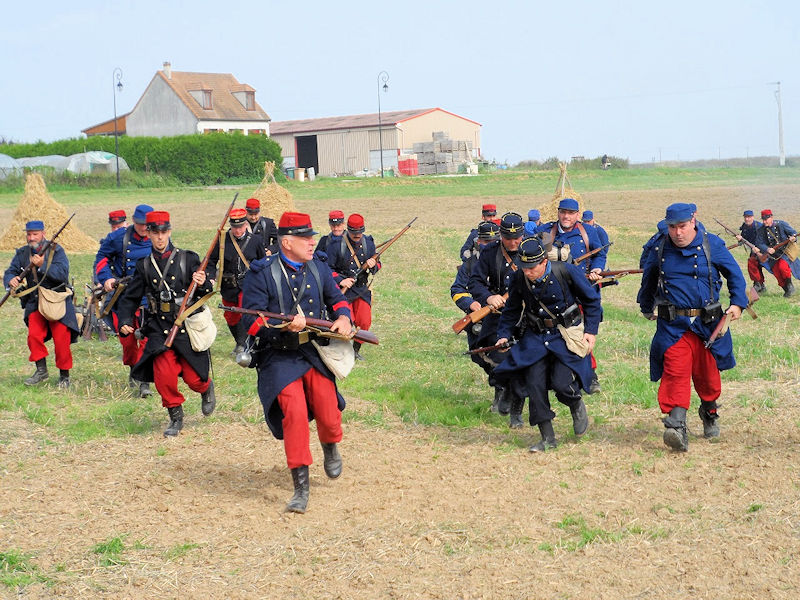
Finally, let me indulge in one bit of alternate history making. Two days after the battle's opening,
Helmuth von Moltke ordered the Crown Prince's
Fifth Army to move much of his manpower off its Verdun anchor, sending a single corps south against what has been called the Troyon Gap, where only a small fort guarded a crossing of the Meuse River, and the remaining available units to the west of Verdun. Had he (or the General Staff) thought more boldly, revising that deployment by leaving a single corps to monitor
the Verdun garrison while sending the rest of
the army to storm the Meuse Heights and cross
the river, history might have changed dramatically. Even mighty little Fort Troyon would
not have been able to stem the German tide flooding across the Meuse, which would be free to attack Joffre's rear, effectively destroying his operational concept. Crown Prince Wilhelm,
should that have transpired, would have been
the greatest hero of a European (not World) War that had begun in August 1914 and ended just five weeks later. How's that for "what if?" history? I could never have conceived of this had not I stood on the ramparts of Fort Troyon overlooking the River Meuse with map in hand to appreciate the strategic opportunity the German Army had missed there.
Visit Our Daily Blog

Click on Image to Visit

Different Perspectives
Here is a selection of videos which give a feel for what the battlefields of the Great War look like up close.
![]() The Somme Battlefields
The Somme Battlefields
![]() Vimy Ridge from the Air
Vimy Ridge from the Air
![]() Verdun - Fort Douaumont
Verdun - Fort Douaumont
![]() Walking the Battle of Ypres
Walking the Battle of Ypres
![]() Anzac Day Landings
Anzac Day Landings
![]() Kolovrat Outpost on the Caporetto Front
Kolovrat Outpost on the Caporetto Front
![]() St. Mihiel U.S. Cemetery
St. Mihiel U.S. Cemetery
![]() Notre Dame de Lorette Flyover
Notre Dame de Lorette Flyover
![]() La Main de Massignes Walk
La Main de Massignes Walk

Why Visit the Old Battlefields?
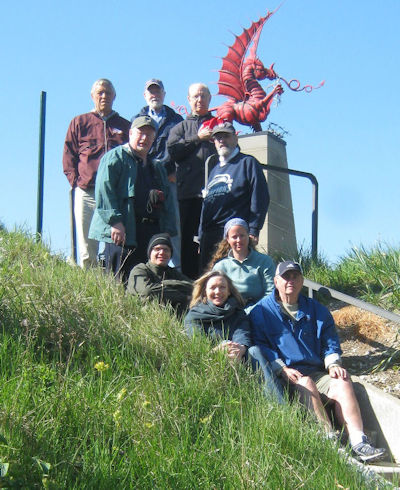
Delville Wood Welsh Memorial
[On the Western Front] there are places where imagination is needed to peel away today's urbanized landscape, but there are many other places where this is not necessary, particularly on a cold winter's day when the wind bites and the ground is hard with frost. Somehow, the landscape has absorbed the events that occurred here, even where the physical evidence is not immediately at hand. There is a presence and there are places along the Western Front where this lingers extremely heavily. . . Stand in a small copse in the center of a field on the Somme, and that small patch of ground can reveal the pock-marked traces of war that the farmer's plough has gradually removed in the surrounding area. . . The extent to which the landscape of the First World War still carries evidence of the conflict, so many years on, is a unique phenomenon.henomenon.
Simon Doughty, Silent Landscape: Battlefields on the Wetster Front
Free Publications |
||
|
Amazon.com |
||

2. About one out of seven people is foreign born (about the same today).
3. Ninety percent of Americans are of European descent (62.6 percent today).
4. The median age is 25 (nearly 40 today) and one third of all Americans are younger than 15 (20 percent today).
5. More Americans live in rural areas than in cities and towns (more than 80 percent reside in cities and suburbs today).
6. The average manufacturing job pays 53 cents an hour.
7. Fewer than one in four adults owns an automobile.
8. About a third of American households have a telephone.
Source: Getty Research Institute

Conan Doyle Visits Wipers
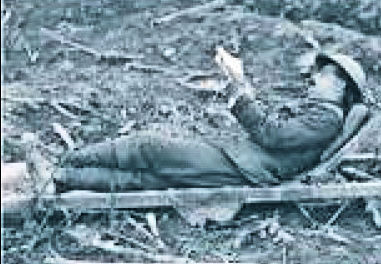
Conan Doyle Takes a Break from His Battlefield Touring
And now we are there–in what is surely the most wonderful spot in the world, the front firing trench, the outer breakwater which holds back the German tide. How strange that this monstrous oscillation of giant forces, setting in from east to west, should find their equilibrium here across this particular meadow of Flanders. . .
It is a terrible place down yonder, a place which will live as long as military history is written, for it is the Ypres Salient. What a salient it is, too! A huge curve, as outlined by the lights, needing only a little more to be an encirclement. Something caught the rope as it closed, and that something was the British soldier. But it is a perilous place still by day and by night. Never shall I forget the impression of ceaseless, malignant activity which was borne in upon me by the white, winking lights, the red sudden glares, and the horrible thudding noises in that place of death beneath me.
The afternoon saw us in the Square at Ypres. It is the city of a dream, this modern Pompeii, destroyed, deserted, and desecrated, but with a sad, proud dignity which made you involuntarily lower your voice as you passed through the ruined streets. It is a more considerable place than I had imagined, with many traces of ancient grandeur. No words can describe the absolute splintered wreck that the Huns have made of it. The effect of some of the shells has been grotesque. One boiler-plated water-tower, a thing forty or fifty feet high, was actually standing on its head like a great metal top. There is not a living soul in the place save a few pickets of soldiers, and a number of cats which become fierce and dangerous. Now and then a shell still falls, but the Huns probably know that the devastation is already complete.
We stood in the lonely grass-grown Squre, once the busy centre of the town, and we marvelled at the beauty of the smashed cathedral and the tottering Cloth Hall beside it. Surely at their best, they could not have looked more wonderful than now. If they were preserved even so, and if a heaven-inspired artist were to model a statue of Belgium in front, Belgium with one hand pointing to the treaty by which Prussia guaranteed her safety and the other to the sacrilege behind her, it would make the most impressive group in the world. It was an evil day for Belgium when her frontier was violated, but it was a worse one for Germany. I venture to prophesy that it will be regarded by history as the greatest military as well as political error that has ever been made. Had the great guns that destroyed Liége made their first breach at Verdun, what chance was there for Paris? Those few weeks of warning and preparation saved France, and left Germany as she now is, like a weary and furious bull, tethered fast in the place oftrespass and waiting for the inevitable poleaxe.
We were glad to get out of the place, for the gloom of it lay as heavy upon our hearts as the shrapnel helmets did upon our heads. Both were lightened as we sped back past empty and shattered villas to where, just behind the danger line, the normal life of rural Flanders was carrying on as usual. A merry sight helped to cheer us, for scudding down wind above our heads came a Boche aeroplane, with two British at her tail barking away with their machine guns, like two swift terriers after a cat. They shot rat-tat-tatting across the sky until we lost sight of them in the heat haze over the German line.
Arthur Conan Doyle, A Visit to Three Fronts
Fathoming Gallipoli
By the Editor
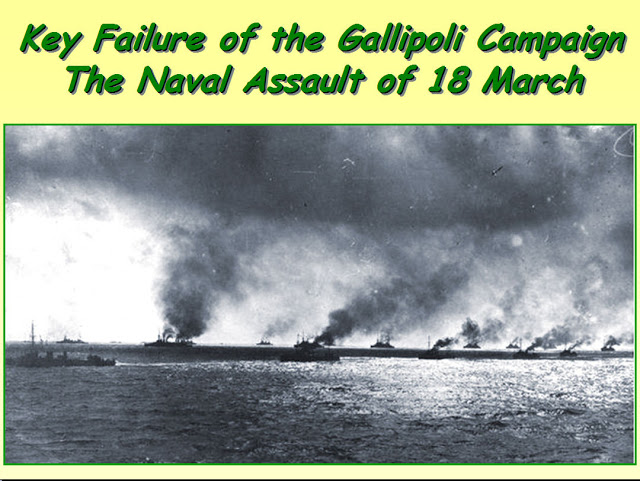
18 British and French Capital Ships Approaching the Straits
on 18 March 1915
It is no longer possible to force the Dardanelles . . .Nobody would expose a modern fleet to such perils.
Winston Churchill, 1911
Obviously, Winston Churchill changed his mind four years later, despite Horatio Nelson, the Royal Navy's greatest admiral, having earlier advised against ships engaging fortifications. Nelson had considerably more experience in such matters than the First Lord of the Admiralty. Nonetheless, the first phase of the Allied assault against the Dardanelles involved a major fleet effort to eliminate the numerous forts, open and mobile batteries, and old castles with modern artillery installed, all arrayed along the straits. Eighteen battleships with their enormous main batteries, supplemented at times by marine landing parties apparently seemed sufficient to the naval planners for the mission. Also, the mission planners felt the mines planted in the straits were a solvable problem. However, it was the combination of the forts, artillery, and mines that was to prove unsolvable.
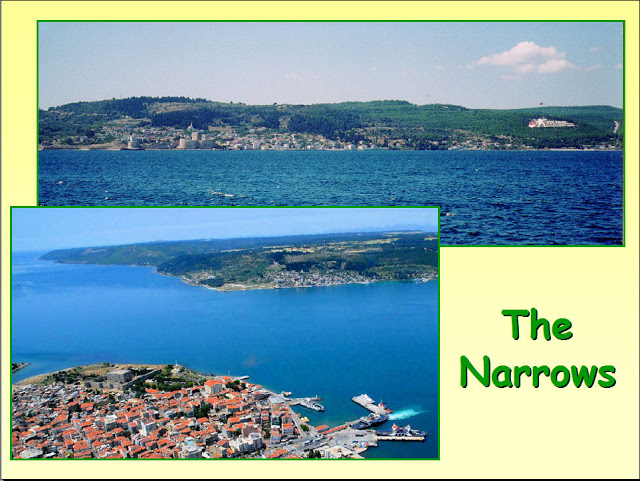
Two Views of the Dardanelles Below: City of Çanakkale at the Narrows, Entrance to Straits to Far Left; Top: Narrows from Çanakkale, Kilid Bahr Fortress Visible to Left on Shoreline
These views, above and below, give a sense of the distances involved and the tactical situation on 18 March.
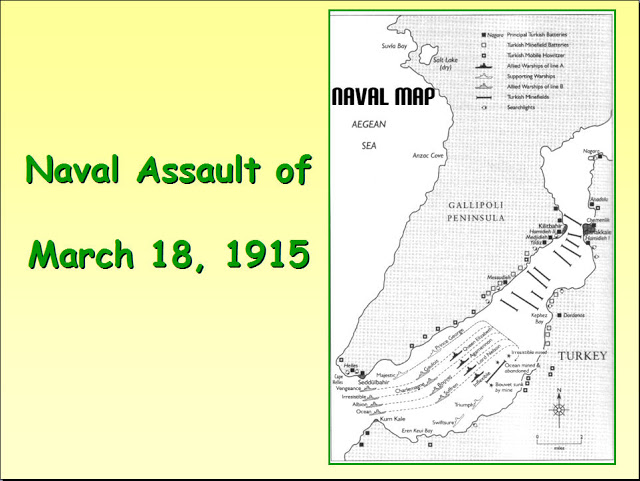
Battleships, Minefields, and Shore Batteries
(Çanakkale Is the Large Square on the Right)
The Turkish guns were considered too old, too exposed, and of too small a caliber to threaten the heavily armored ships. However, I have visited many of the sites, and the positions were numerous and all very well sited, with commanding views of the straits. They compared favorably to the Coastal Artillery sites around San Francisco Bay that I've frequently visited.
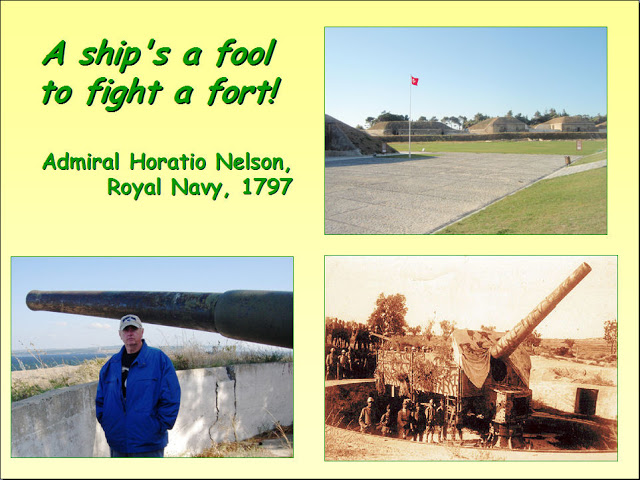
Lower: Your Editor at Kum Kale on the Asian Side, Typical Turkish Shore Battery Top: Kilid Bahr, Largest and Most Modern of the Forts, Today
The decisive blow against the British and French armada, though, came due to a passive defense—mines. Beginning where the width of the Dardanelles decreases from its maximum 7 km to 1.6 km at the Narrows, ten rows of naval mines were laid just below the surface perpendicular to the straits. The Royal Navy knew all about these. They just needed to be swept away to allow the fleet to advance. But the forts on shore prevented the minesweepers from doing their work, so the battleships in rows of four were sent in to take turns pounding the forts. After firing, each row was to turn starboard toward the Asian side, where an indentation on the shoreline provided a turning basin for moving to the rear.
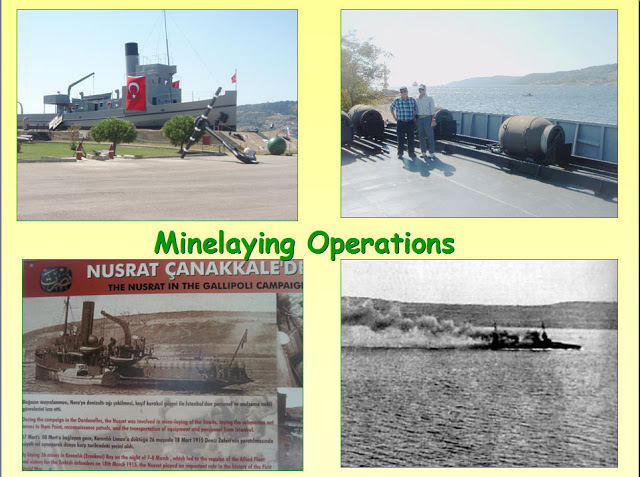
Nusrat, the Most Famous Turkish Ship of the War, Views of the Minefield Area, the Turning Basin (Upper Right), and French Battleship Bouvet Sinking
Unbeknownst to the Allied naval command, however, was the work of the German-built minelayer Nusrat. On the night of 7/8 March 1915, with Capt. Hakki Bey in command, Nusrat ventured out in the silence and darkness from Çanakkale and parallel to shore laid the 26 remaining available mines (in what was to prove the fleet's critical turning area near the Asian shore). Naval and air reconnaissance failed to discover these mines. In quick succession here on 18 March, the Royal Navy lost HMS Ocean and Irresistible and the French battleship Bouvet. Three other battleships were seriously damaged from mines or in the exchange of gunfire. These undreamt-of losses utterly demoralized the naval staff, and a land campaign was initiated—one that the Turkish Army was confident it could defeat.

During my visits to Gallipoli I have discovered that the Turks have a completely different view of the 1915 campaign than that presented in English-language sources. They believe that after the main naval assault of 18 March failed they had defeated the Allies because they could subsequently deploy enough forces to the Gallipoli Peninsula or the Asiatic side to foil any effort to control the straits or march overland on Constantinople. Enver Pasha declared this to be the case at the time, and, for once, his instincts were correct. "March 18, 1915" is Turkey's equivalent to Anzac Day–but a victory day, proclaimed as such in a large sign on a hill overlooking Çanakkale, and is also the name that is given to the local university.
Appreciating Caporetto
The Editor
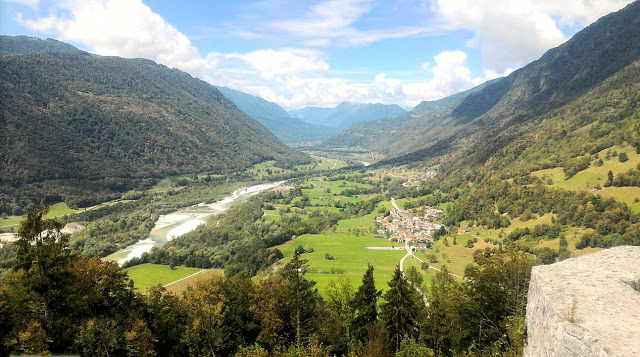
Site of the Southern Breakthrough Looking North Along the Isonzo (Soca) River
The Caporetto offensive launched 24 October 1917 along the Isonzo River, is considered one of the most decisive victories of the 20th century. It was boldly planned, very ably organized, and well executed. While two Austrian armies, under General Svetozar Borojevic von Bojna, attacked the Italian Third Army on the Carso and Bainsizza Plateaus on the lower ground near the Adriatic shore, farther north in the more mountainous part of the Isonzo sector, the German-Austrian Fourteenth Army, targeted the Italian Second Army. Comprising the six German divisions and nine Austrian under German General Otto von Below, with Konrad Krafft von Dellmensingen as his chief of staff, the Fourteenth Army's masterful double breakthrough proved decisive, annihilating the Second Army.
Reading accounts of the battle in no way prepared me for the stunning reality of the size and verticality of the Caporetto battlefield when I first visited it in 2010. For the first time, I saw firsthand the vulnerability of the Italian Second Army. The lines were so widely separated in distance and altitude, it was impossible for them to support one another.
In the photo above, the viewer is positioned on the ruins of Tolmin Castle in present-day Slovenia looking to the northwest. The river in the foreground is the Soca, formerly known as the Isonzo. Exactly 8 miles in the distance is the river town of Kobarid, formerly Caporetto. In October 1917 Italian, German, and Austrian troops were deployed across the river basin and up into the mountains rising on either side. Here, one of the most decisive breakthroughs in all of military history would take place in the opening of the Battle of Caporetto. A second breakthrough, similar in execution and impact, took place concurrently in the far northern sector of the battleground, but in this article we will restrict ourselves to what happened here in the southern section between the towns of Tolmin and Kobarid.
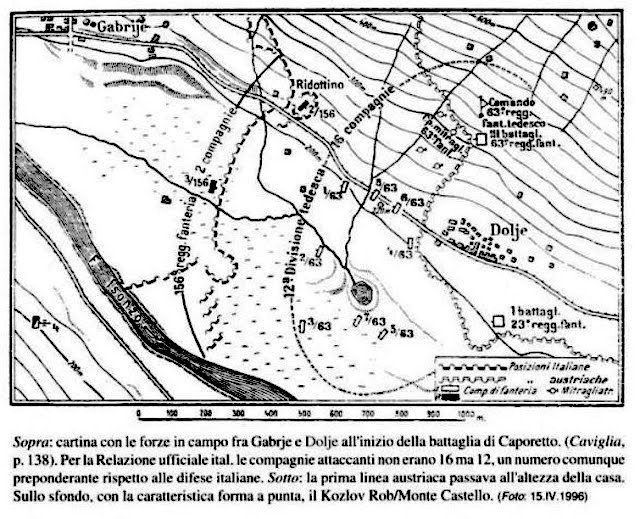
Map of Deployments Along the River
This map shows the deployment of the Italian 12th Division astride the river on the morning of 24 October 1917. The map's orientation is 90 degrees counterclockwise from the photo above. Tolmin Castle is not shown but would be just off the map to the immediate right of the village of Dolje. The 12th Division was deployed in three thin lines, just strong enough to slow down an enemy assault. The river basin was thought by the Commando Supremo to be an excellent "kill zone" for the artillery deployed on the surrounding hills and mountains. This kill zone would not come about on the morning of the attack, however, because of the suppressive power of the awesome artillery and gas assault of the attackers and the rain and dense fog that obscured the vision of all the observers in the valley that morning. Neglecting the effect of bad weather was a major oversight of the Italian high command, but it was not the greatest flaw in their defensive preparations.
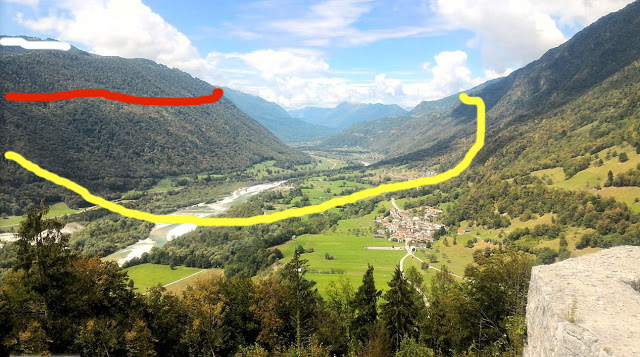
Italian 1st Line (Yellow), 2nd Line (Red), and 3rd Line (White)
The decisive problem for the Italian soldiers that day was that their commanders had deployed them in a doubly flawed fashion. In places, the three lines of the forces were too distant to support each other, and in others, the lines converged and made it possible for a powerful thrust to break through all three positions with a single attack.
In this version of the photo, the three Italian lines are superimposed on the terrain: yellow for 1st, red for 2nd, and white for 3rd. Reserve formations are far to the west, behind the mountains shown on the extreme left. Austrian forces are on mountains to the right, German divisions are concentrated around Tolmin, in the foreground and to the left of the picture. Note that the Italian 1st line goes right up into the high mountains. At the outbreak, the Austrians attacked these troops (there were tens of thousands of the best Italian soldiers, including elite Arditi and Alpini, on the mountainside) from the peaks above to pin them down. Meanwhile, German troops attacked down both sides of the river and were halfway to Caporetto before the Italians knew what hit them. There would be no relief for the now surrounded men on the mountains. No one could see what was going on, and even without the fog, there was no possibility of sending reinforcements from the distant 2nd line, down one mountain and up another to relieve the trapped men. Within the first hour of the ground assault in just this part of the battlefield, Italy suffered its greatest defeat of the war, and the catastrophe had just begun to unfold.
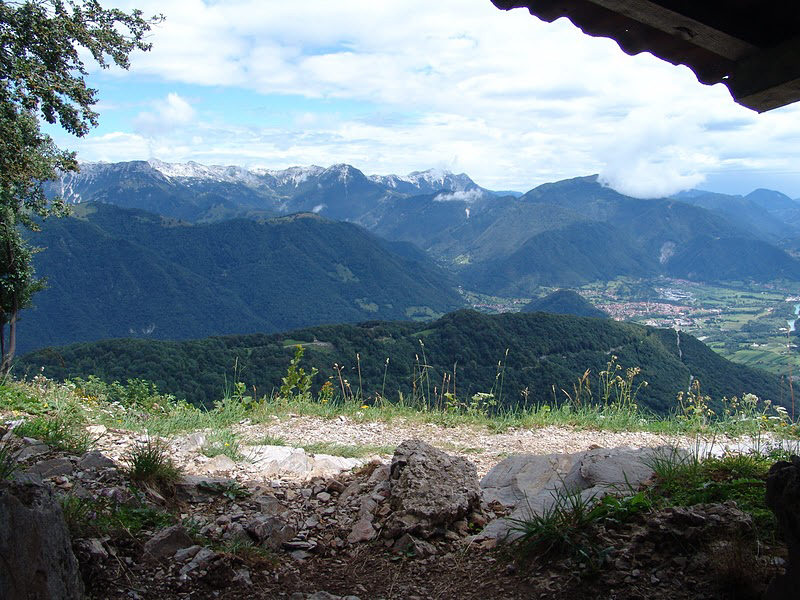
View from Italian 3rd Line Observation Post (Tolmin on Right)
Let's look now at what's happening on the left side of the photo. German soldiers, including the inimitable Lt. Erwin Rommel (Remember him from the Battle of the Marne?), crashed through the Italian 1st line and moved against the 2nd line, capturing its strong points and observation posts in detail. The Italian reserves, miles off the left side of the middle photo and directly behind the lower, were too far to the rear to arrive in a timely way. The entire first line had been lost, and there was another nearer dynamic unfolding that soon occupied the attention of the remaining Second Army defenders. About two miles to the right of the lower photograph, on the slopes of a steep mountain named Mte. Jeza, the three Italian lines came dangerously close to one another. At this point, another breakthrough took place that allowed the opposition to circle around the 3rd Italian position (white line) along the high peaks above the river. Every Italian position on the 1st, 2nd, or 3rd line could be rolled up from the rear. With a matching situation eventuating from the northern breakthrough, Commando Supremo soon realized its entire front was collapsing and gave the orders to withdraw the remains of its Second Army, and the entirety of its Third Army deployed farther south on the Isonzo line and retreated deep into Italy. German and Austrian units were soon in full pursuit.
100 Years Ago:
|
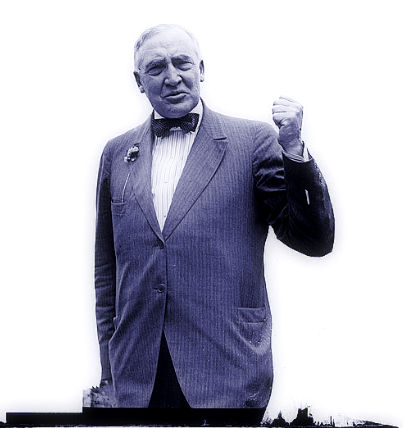
Warren G. Harding Campaigning |
A fresh face representing a steady approach to governance was needed to restabilize American life. The face was that of Ohioan Warren Gamaliel Harding; his policy came to be known as a "Return to Normalcy." Before his nomination, Warren G. Harding declared, “America’s present need is not heroics, but healing; not nostrums, but normalcy; not revolution, but restoration; not agitation, but adjustment; not surgery, but serenity; not the dramatic, but the dispassionate; not experiment, but equipoise; not submergence in internationality, but sustainment in triumphant nationality.”
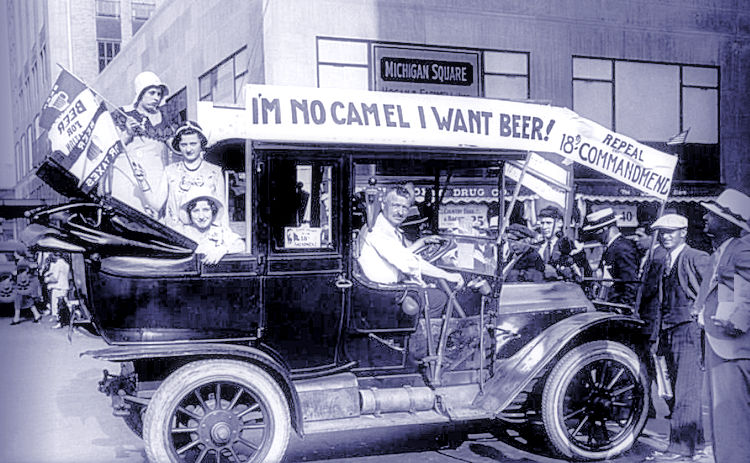
Much of America Rejected Prohibition
A war- and world-weary electorate handed the U.S. senator and former newspaperman—whom it was universally agreed, "looked like a President"—a landslide victory over his Democratic challenger and fellow Ohioan, James M. Cox, making Harding the 29th U.S. president (1921–23). Most remembered for the Teapot Dome scandal which came to light after his death in 1923, Harding's Administration had some notable achievements including the calling of the Washington Arms Conference, cutting down the wartime controls and bureaucracy, limiting immigration to allow for assimilation of the tens of millions arrived since the turn of the century, improving the budget process, and proving sympathetic to minorities and business innovation. Ironically though, Harding's "Return to Normalcy" in many ways helped set the stage for the Roaring Twenties, which turned out to be anything but normal.
Sources: Encyclopedia Britannica, Library of Congress, The White House Website
A Spectacular World War One Memorial Rediscovered
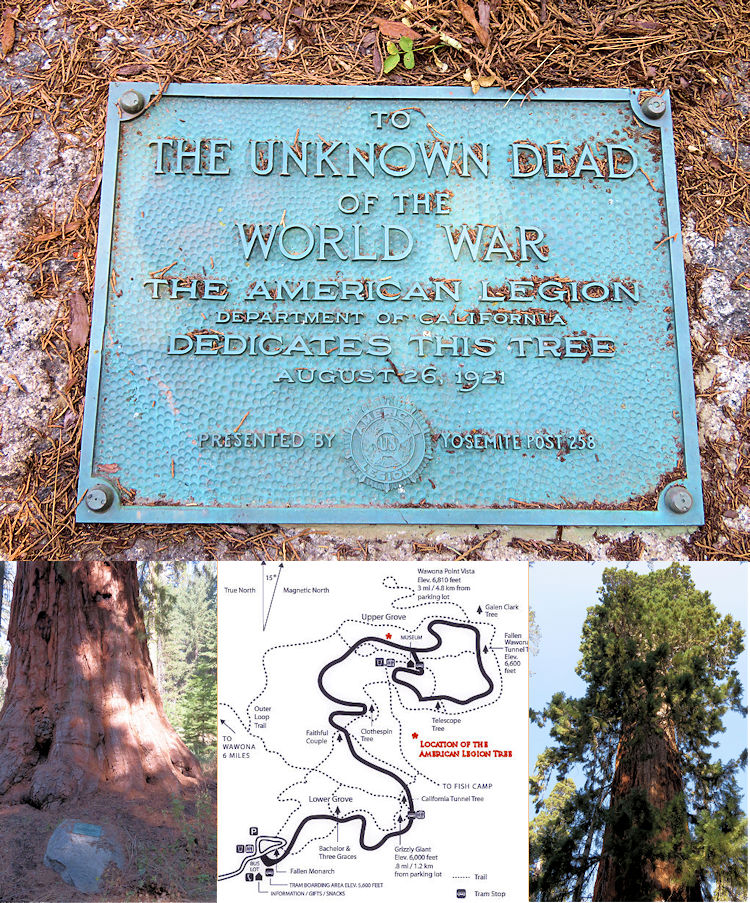
The "American Legion Tree" at Mariposa Grove, Yosemite National Park
My friends and colleagues from the California Centennial Committee, Courtland and Melissa Jindra, were able to escape the Wuhan Flu lockdown recently and pay a visit to the Mariposa Grove of Giant Sequoia Trees, which is part of Yosemite National Park here in California. The Grove holds over 500 of the magnificent trees, the tallest of which is 286 feet. On their return trip to the parking lot, they spotted a boulder with a plaque they had not noticed on their first pass-by in front of an otherwise unidentified tree. (The "celebrity trees" of the Grove like the President Grant are clearly signed.) On closer inspection, our two fellow Great War buffs were astonished to discover that they had come across a memorial that previously had never appeared on inventories of either national or California WWI monuments any of us were familiar with.
As you can read on the montage above, this particular tree, known as the "American Legion Tree", was dedicated in 1921 to the Unknown Dead of the World War by the Legion's California department. It is 250 feet tall and 18.3 feet in diameter. Over the centuries it has been damaged by fire and storm, but shows all the signs of surviving long after all of us have gone on to our maker. The map above is for those of you who happen to find yourself at Mariposa Grove in the future and visit this magnificent war memorial. I don't quite understand why the American Legion Tree has been long overlooked, even though the recent centennial commemorations, but thanks to Courtland and Melissa, it's been rediscovered. We will try not to forget it again.
The National Museum of the U.S. Army to Open |
A World War One Film Classic
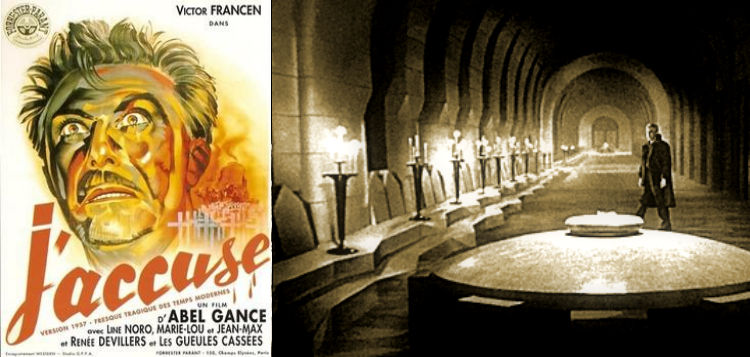
In 1919 French director Abel Gance created one of the earliest antiwar films, titled J'accuse!. The silent production, considered technically brilliant for the time, was partly filmed on the Great War's battlefields and was most memorable for the concluding scenes in which 2,000 dead French Poilus rise zombie-like from their graves to warn against ever repeating the horror they had endured. In 1938 Gance saw another war inexorably approaching and he decided to re-issue this warning—this time with a new story line, sound, and better production values.
The 1938 version of J'accuse! has a more complicated plot than the 1919 version, but the rising of the dead conclusion is brought back for an encore. The narrative centers on a soldier named Jean Diaz who barely survives a mission on the last day of the war while watching all his compatriots die. He becomes an antiwar fanatic with a scientific bent. While the accompanying romantic subplot falls a bit flat, Gance has added another "character" to heighten the dramatic tension—the Douaumont Ossuary from the Verdun battlefield, which was constructed after the release of the 1919 version. Somber and formidable in real life, under director Gance's skilled hand with lighting and special effects, it becomes a haunting reminder of the cost of war. (An image of the interior, where 130,000 skeletal remains are warehoused, is shown above.) Watch for the film on the cable movie channels. Otherwise, it can be purchased in Blu-Ray and DVD formats on Amazon.com
| Thanks to each and every one of you who has contributed material for this issue. Until our next issue, your editor, Mike Hanlon. |
|
|
Content © Michael E. Hanlon
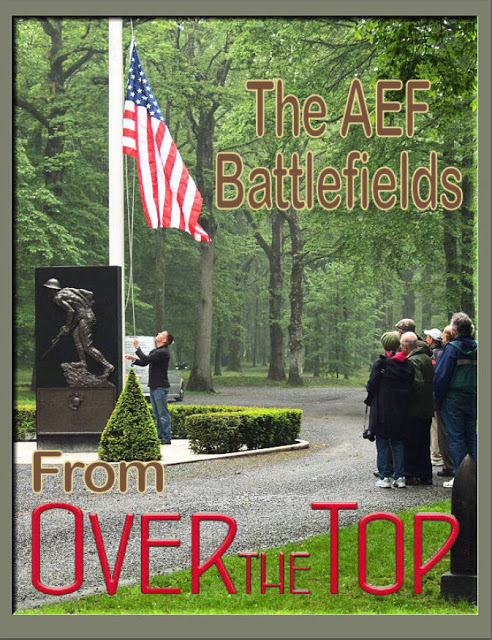 >
>

